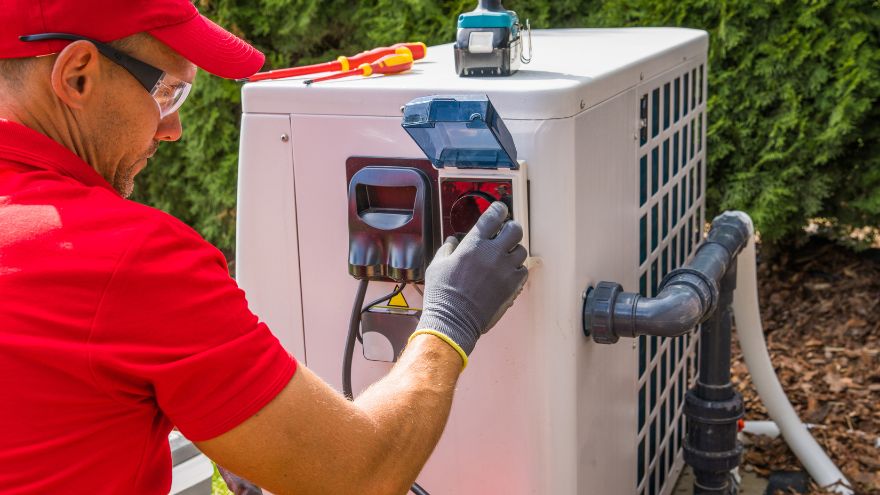When it comes time to choose the right heating and cooling system for your home or office, there are many factors to consider. One of the main dilemmas is choosing the right heating device. More and more often, the choice falls on an air heat pump, but the need to make choices does not end there. You should then ask yourself whether it is worth choosing a split or monoblock heat pump. Both of these systems offer effective solutions, but a split heat pump has several significant advantages that make it a better choice than a monoblock. In this article, we will look at the difference between these two technologies and why a split heat pump may be a better choice.

Check out split heat pumps at the Onninen wholesaler
What is a split heat pump?
 A split heat pump is a device that consists of two separate units: one located outside the building containing the evaporator, and the other inside containing, among others, condenser, compressor, water pump. The outdoor unit uses thermal energy from the environment to heat or cool the refrigerant, which is then used internally by the indoor unit to heat/cool the room or heat domestic hot water. This makes the split heat pump an efficient and ecological solution for heating buildings.
A split heat pump is a device that consists of two separate units: one located outside the building containing the evaporator, and the other inside containing, among others, condenser, compressor, water pump. The outdoor unit uses thermal energy from the environment to heat or cool the refrigerant, which is then used internally by the indoor unit to heat/cool the room or heat domestic hot water. This makes the split heat pump an efficient and ecological solution for heating buildings.
Advantages of a split heat pump
Split heat pumps are a technologically advanced solution that is gaining recognition due to a number of general advantages. This division into an outdoor and indoor unit introduces a new quality in energy efficiency and provides a number of benefits to users. Starting from energy savings, through easy installation, to environmentally friendly operation - split heat pumps are becoming a pioneer in the field of modern, economical and ecological heating solutions. Therefore, more and more people appreciate these devices not only for their innovation, but also for their ability to harmonize comfort of use with a sustainable approach to environmental protection.
Energy efficiency of split heat pumps
 The split heat pump offers very good energy efficiency. Why? Because the outdoor unit does not contain hydraulic elements of the heat pump, which are entirely located in the building and are therefore not exposed to the influence of external conditions. As a result, the split heat pump should consume less energy, which translates directly into lower electricity bills.
The split heat pump offers very good energy efficiency. Why? Because the outdoor unit does not contain hydraulic elements of the heat pump, which are entirely located in the building and are therefore not exposed to the influence of external conditions. As a result, the split heat pump should consume less energy, which translates directly into lower electricity bills.
Less heat loss with a split pump
A monoblock tends to generate higher heat losses because the unit contains many components in one housing. These include: heat exchanger; condenser; circulation pump; etc. In the case of a split heat pump, the outdoor unit is separated from the building interior and connected to the condenser by pipes with refrigerant, which reduces the risk of heat loss.
Safety with split heat pumps
Placing all hydraulic elements in split pumps inside the building guarantees that the heating system will not freeze even during long interruptions in electricity supply. A monoblock heat pump cannot boast such a solution; during heavy frosts and long power outages, it should be additionally protected against freezing by using a UPS or safety valves.
Lower price of split heat pumps
 Split heat pumps are usually cheaper devices than monoblocks. However, this is not a rule because the price depends not only on the type of device but also on the quality of the components used and additional equipment included in the complete solution.
Split heat pumps are usually cheaper devices than monoblocks. However, this is not a rule because the price depends not only on the type of device but also on the quality of the components used and additional equipment included in the complete solution.
When is it worth choosing a split heat pump?
A split heat pump is the perfect solution for those looking for a safe, effective heating and cooling system. Its high energy efficiency, quiet operation, lower heat losses, safety and long service life may make it a better choice than monoblock heat pumps . When choosing a heating system, it is worth considering a split heat pump to enjoy comfort, safety and energy savings for many years.